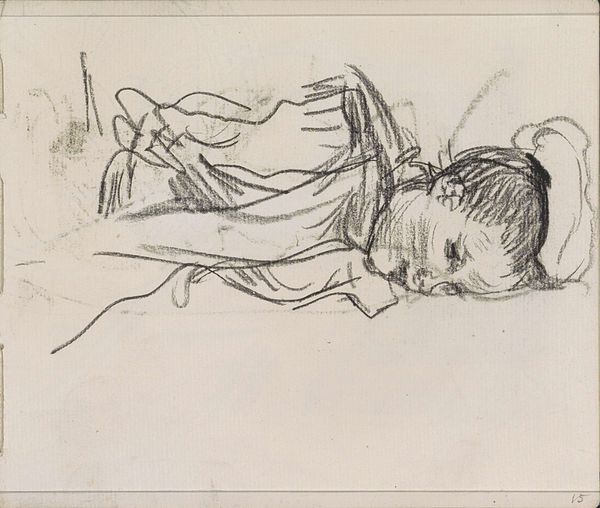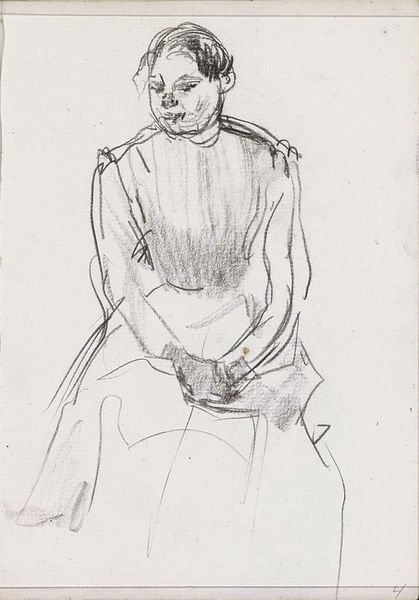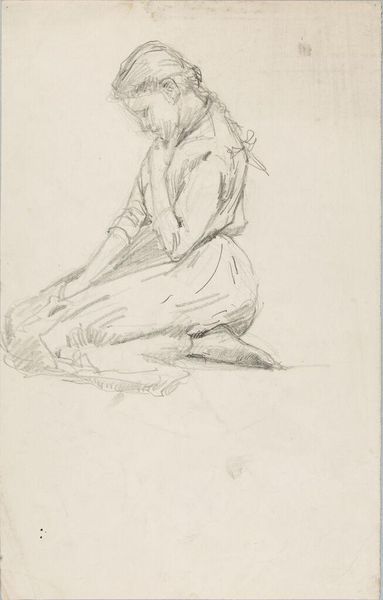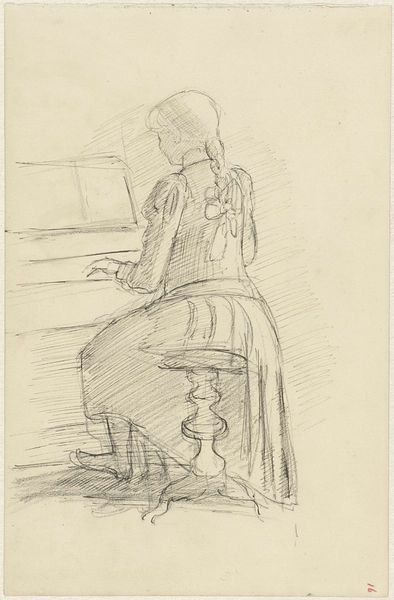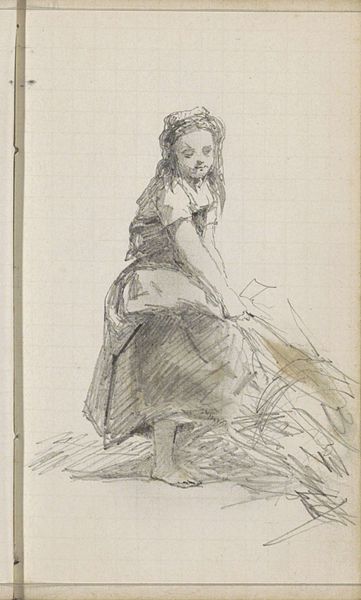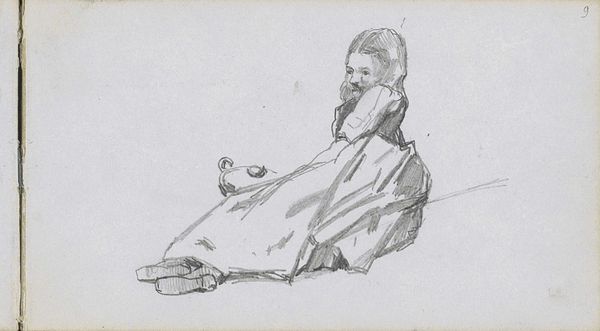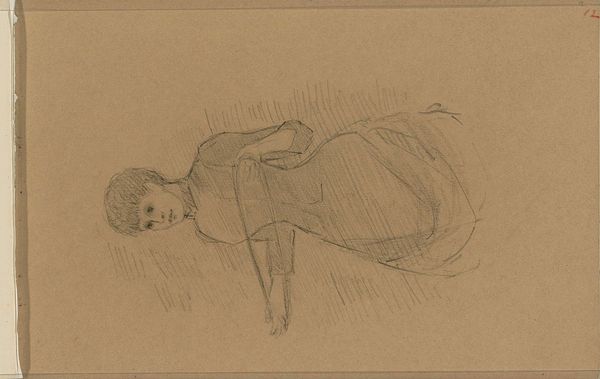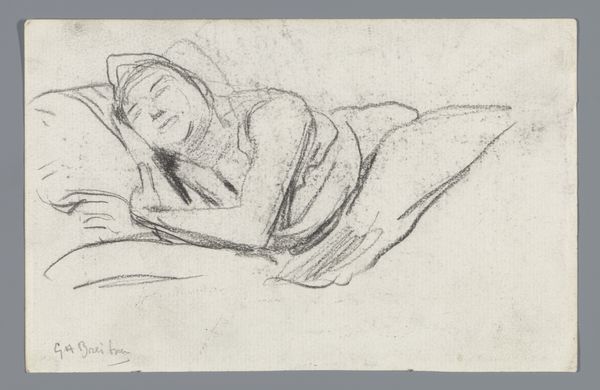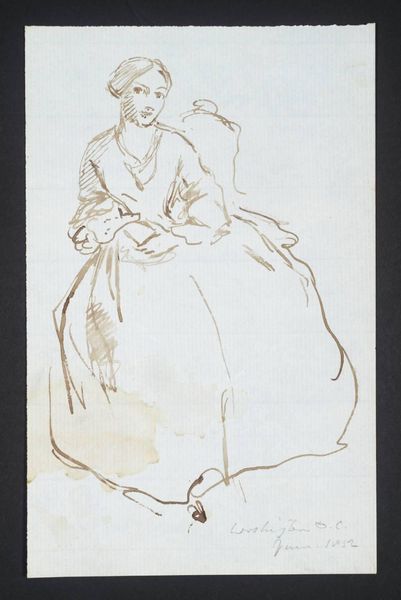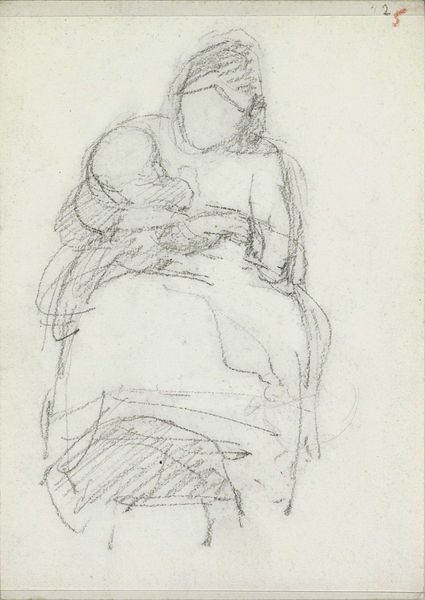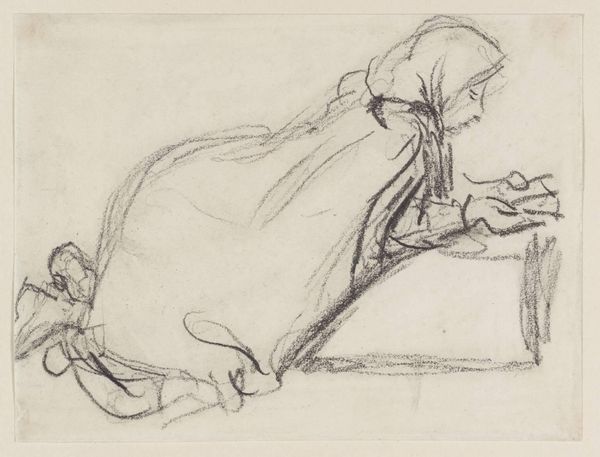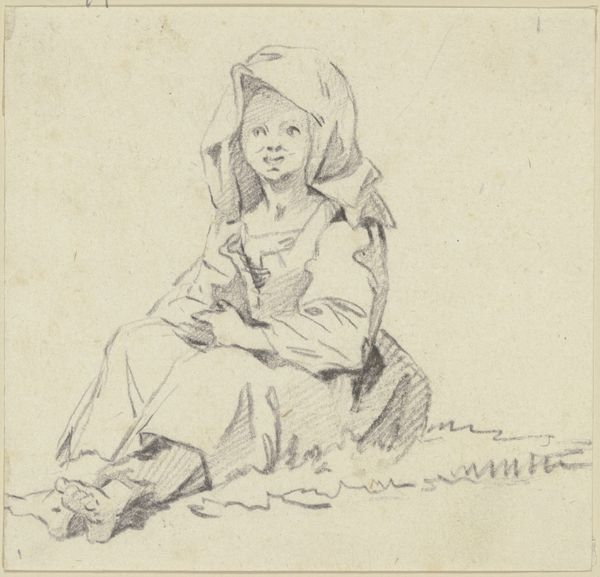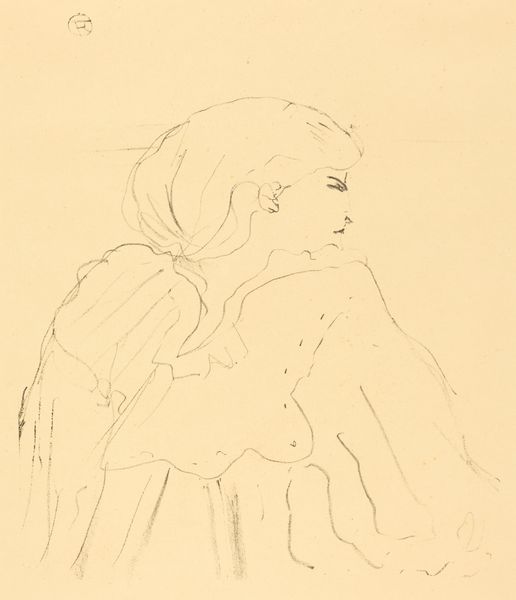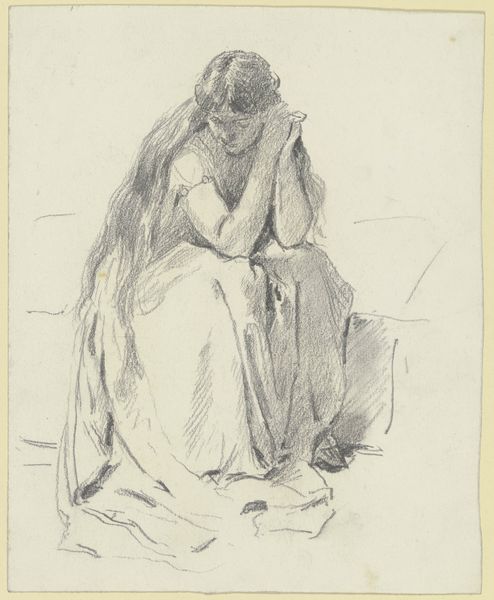
drawing, paper, pencil
#
portrait
#
drawing
#
dutch-golden-age
#
pencil sketch
#
landscape
#
figuration
#
paper
#
pencil
#
realism
Copyright: Rijks Museum: Open Domain
Curator: Welcome. Today, we're looking at "Liggend Meisje," or "Lying Girl," a pencil drawing on paper attributed to Johan Hendrik Weissenbruch, likely created sometime between 1834 and 1903. It's currently held here at the Rijksmuseum. Editor: It's stark, isn’t it? The minimal lines convey such a sense of… stillness. Almost melancholy. The composition focuses intensely on the figure. Curator: Precisely. Notice how Weissenbruch's economical use of line describes the figure’s posture, the fall of light and shadow giving weight to the forms, her simple garments suggesting her social standing. It speaks volumes about the conditions of women’s labor in the Netherlands during the late 19th century. Editor: Agreed. The material reality is important: simple dress and domestic object alongside her speak of simple things. Still, her downward glance generates dynamism which pulls the eye to that part of the composition. I'd be interested in comparing the sketch’s internal lines, and then to compare that, structurally to some sketches by another Dutch master—say, van Gogh! Curator: Weissenbruch, of course, came from a family of painters, he originally learned glass painting but was instructed into watercolors by Anthonie Waldorp. Waldorp's material influence on Weissenbruch's style becomes clearer, especially when you understand he came to encourage the latter in painting landscapes. Weissenbruch's focus here is on this figure within a potential landscape - yet as just the human is sketched, one might expect that the emphasis falls to that field of labour. Editor: Yes, his technique in defining that is intriguing. It almost evokes a dream-like, idealized pastoral, doesn't it? And notice how the figure fills the pictorial space! With all the use of negative space, Weissenbruch draws our focus on that form. The blank paper almost elevates the figure into something… eternal. Curator: To me it feels less idyllic and more a representation of working life at that time, when people were working very hard, with only simple tools and items, trying to find solace wherever they could, whether that be simply a pot of food, a day off. To try and compare such different ways of life misses an element of labour and consumption, to put the drawing back within the field. Editor: A powerful statement regardless, and insightful on many levels! Curator: Indeed, food for thought about labour during Dutch Realism and art!
Comments
No comments
Be the first to comment and join the conversation on the ultimate creative platform.
